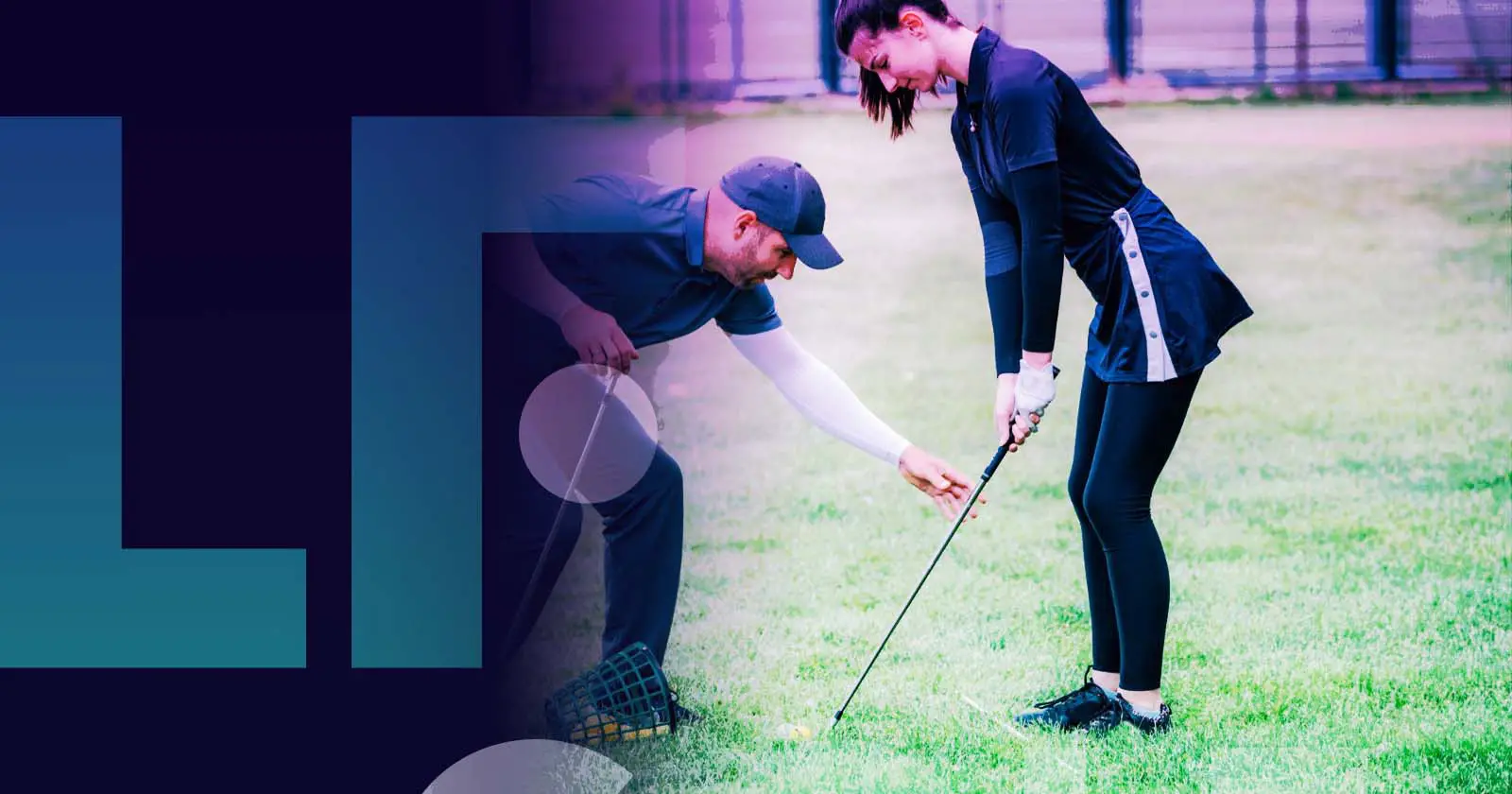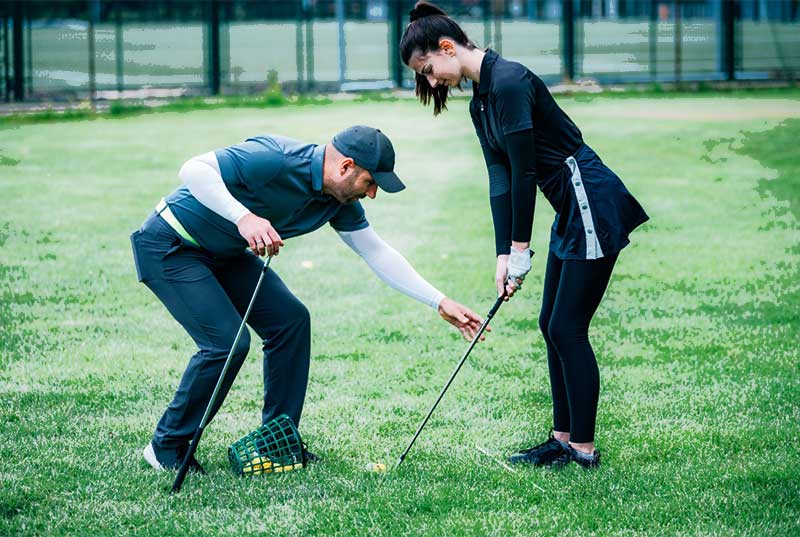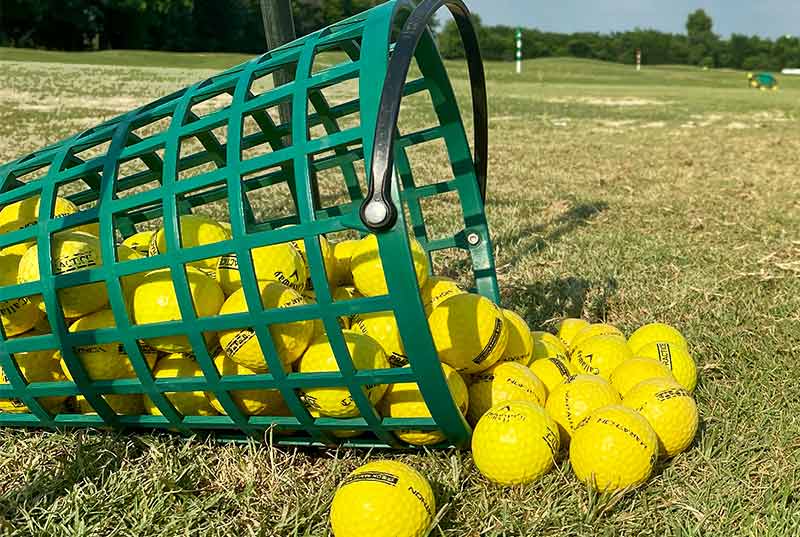Are you picking up golf for the first time in your ENTIRE life?
Or, have you been playing for a few months but not really seeing any change for the better in your golf swing?
Well, today we answer all the important questions for all beginners…are golf lessons worth it for beginners?

Absolutely, golf lessons are worth it for beginners. There are so many moving parts in the golf swing, and there’s simply no way a beginner can know the fundamentals to focus on for he/she to swing the golf club [successfully].
Whether it’s our first time playing putt-putt golf or driving some balls at the range, we all have one thing in common: we’re terrible.
It turns out, that replicating the professional’s fantastic flexibility and touch seen on TV is tough! Fortunately, a little practice goes a long way.
So, whether you’ve already played a few rounds, or are interested in playing a little better, we’ve got some tips and tricks on golf lessons.
The Truth About Golf Lessons
Even a PGA pro will tell you that teaching yourself some fundamental aspects of golf is valuable. Reading greens, understanding how the wind affects your game, and judging how far you can hit a ball may come naturally as you play and practice.
And you probably don’t need me to tell you that while many golf courses rent clubs, it’s always best for a serious beginner to purchase an inexpensive set that fits them. Price wise, renting clubs four or five times equates to just buying a set.
Are golf lessons worth it?
The lower end can be around $20-$40 dollars. If you’re looking to get insight from an established PGA professional(not the kind that play tour events) then you will spend upwards to $150 for a one hour session.
However, if you are just starting out then absolutely paying for golf lessons is worth it.
When taking lessons, ensure you’ve got plenty of time to practice before your next lesson.
By doing so, you’re implementing the swing techniques you learned all while gathering valuable feedback to bring to your next golf lesson.
And, make sure you and your golf pro see eye-to-eye on what you want to achieve and how many lessons that might take.

How many golf lessons should I take?
A series of 5-6 lessons with a qualified instructor should do the trick. With that number of lessons you should have all the fundamentals memorized(written down 🤓).
If you skip lessons for now, practice whenever you can. There’s so much value on Youtube it’s insane. I’ll list a couple of my favorites below when I need some refreshers on important checkpoints in my golf swing…
I find these 2 channels the best simply because they provide actionable insights by way of explaining while doing.
What is the best age to start golf lessons?
How old was Tiger Woods when he appeared on the Bob Hope Show? Maybe this one’s an outlier, but I started swinging clubs with my daughter when she was around 4 years old.
I remember my Dad taking me to the golf course when I was as young as 3 years old, so the sooner the better I say.
To be honest, most kids this young will not retain any guided instruction from any swing coach but really all they’re doing is developing muscle memory.
Is golf difficult to learn?
Many players find that even understanding how to grip a golf club is difficult. If you strangle the golf club, you are introducing unnecessary tension in your swing.
Over-gripping changes your swing from a nice smooth swing tempo to an inside-out thrust and pulls your shoulders offline. For right-handers, the ball will fly straight momentarily before hooking from right to left. Left to right for lefties.
One reason beginners hold their clubs too tight is that they rest the grip against their palms. You want to hold the club more in your fingers to allow for easier wrist hinge.
The classic right-handed grip is for the right hand to be lower on the club with the pinky intertwined with the index finger on the left hand.

But make sure the shaft of the club is nestled into the grip of your fingers only, with your right thumb pointed down against the shaft. Your left thumb should be closer to pointing down into your right hand’s palm.
This softer, lighter grip will help keep the club face on track during your swing into the ball.
Can I teach myself golf?
Anyone who watches some golf on TV or reads online can teach themselves the rudimentary basics of golf. You might even start thinking,
“Damn, my putting is getting better,”
and it probably is. As you start playing, there’s often significant improvement because, as mentioned before, we aren’t perfect in the beginning.
And, almost every player with a desire will enjoy the feeling of accomplishing something on their own. Your scores might dip from your first round’s 110 strokes to under 100 in a month or two.
That’s great. But don’t fool yourself. You’re getting better with practice – but missing out on improving your score in ways you can’t know without help.
If you insist on skipping lessons, start at the driving range with a big bucket of balls and, on each stroke with an easy club to hit (like a 7-iron), only bring your club back about to waist height and swing through the ball as smoothly as possible while striking perfectly centered on the club face.
Later, you can do this with each club and extend your backswing to greater heights to improve distance.

What clubs should you take to your lessons?
When you’re new, it helps to know that the biggest club in your bag, the driver, is for when you’ve more wide open fairways: Par 5’s and long, straight par 4’s for your longer shots.
A 3-wood might be better for a short par 4 or when you’ve got more than 200-yards to go on your second shot. If you’re in the rough (high grass), you’ll need a low iron to get out and have distance.
You’ll probably find that as you step up to each higher number of iron, you’ll lose about 10 yards in distance. And again, don’t swing harder; let the club do the work.
Use your pitching or sand wedge to get onto the green from less than 100 yards out and, of course, from close sand.
Do golf lessons actually work?
What you are reading here are some golf fundamentals. You can practice until your arms fall off, but you don’t know what you don’t know. That’s what lessons are for.
So, while we’d advise lessons soon after getting interested in golf, lessons are suitable for all beginners. The surprising part is that lessons are often sought by and provide advantages for experienced players.
A qualified instructor will see things in your address, swing, and overall mechanics that you can’t see yourself. Some tips from a golf pro may seem simple but will yield results and lower your score quickly after you get the hang of them. Others do take time.
Many instructors work in 30-minute sessions. Still, you might want to loosen up and hit a short bucket before your lesson, so give yourself an hour.
Can I take lessons after age 30?
Yes, age is not a deterrent to learning golf. Sam Snead won on the PGA Tour at age 52, so it’s never too late to take a golf lesson.

How many golf lessons should I take?
If you are just starting out playing golf for the first time, I would suggest taking golf lessons at least twice a month.
After you initial lesson go ahead and give yourself a couple weeks to hone in on what you just learned, and try and schedule a second lesson after those first two weeks.
Be sure to let your golf instructor HOW and WHERE you are missing your shots so he/she can work with you specifically on how to fix the mistakes you are making.
Can golf lessons make you worse?
For a beginner, it’s unlikely, because nearly everything taught will be fundamental. Then again, it’s always possible that an instructor will zip through the lesson with a standard set of tips and clues and send you off without analyzing your swing.
That lousy start can confuse a player with some experience and some good basics. So, during your next session, speak up and address your success or failures before the lesson. That alone will likely help the pro; in turn, they’ll know how to help you better.
Follow us on Twitter at https://twitter.com/wolfitgolf and let me know if you’ve implemented any of these techniques to playing golf YOUR best way.

